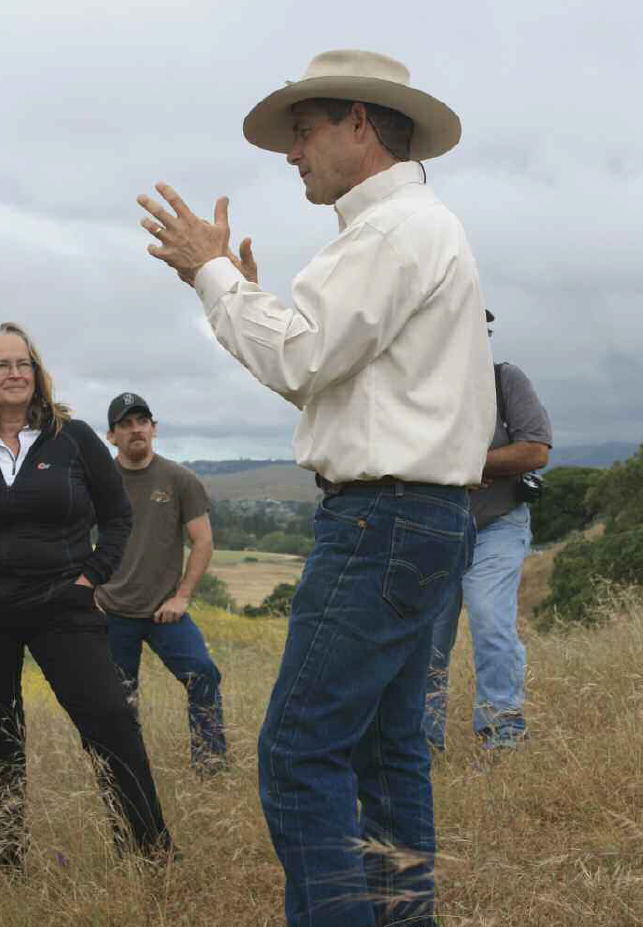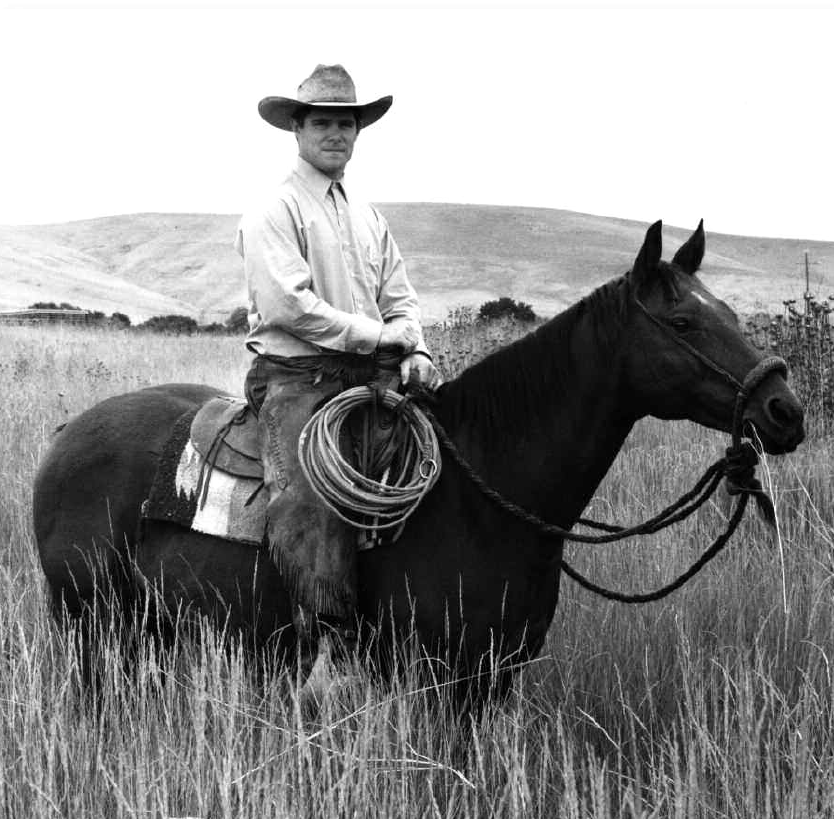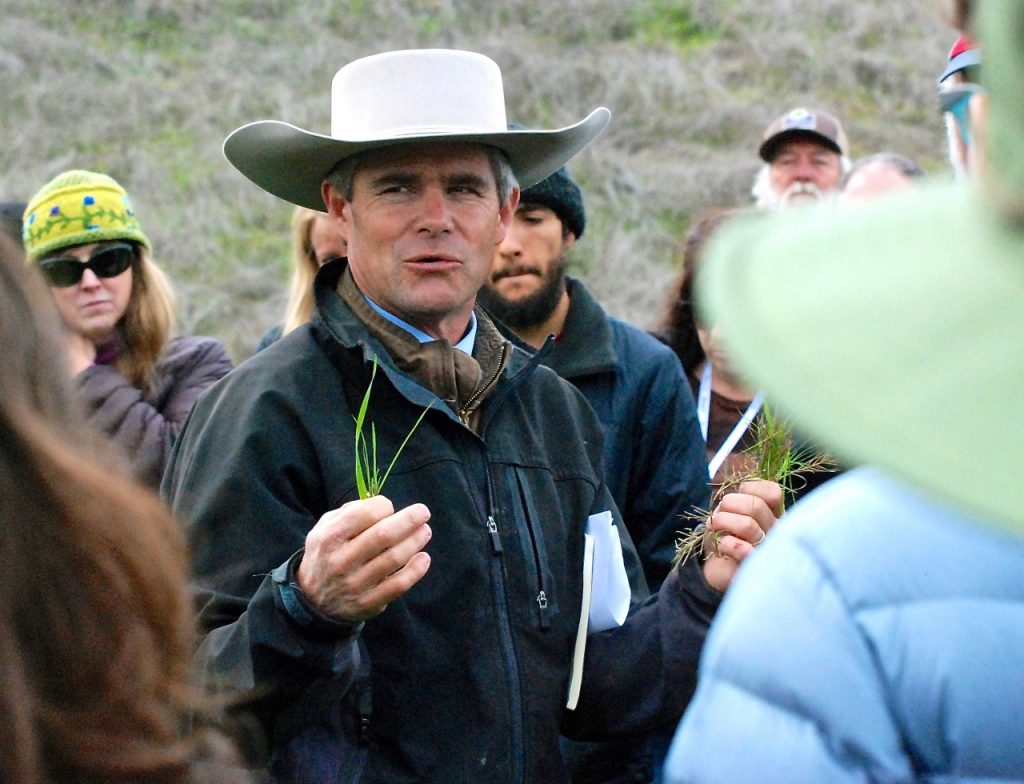 Editor’s Note:
Editor’s Note:
I met Joe Morris on a visit to the Paicines Ranch in Paicines, California for the Rancher-to-Rancher field day. Joe and his wife, Julie, run Morris Grass Fed, a holistically managed cattle operation. He’s also a founding member of Rancher 2 Rancher. Read more here.
When he was younger, Joe worked often with Tom and Bill Dorrance. He sought out Tom, driving over to nearby Merced, to seek his consult on more challenging horses. Bill helped him with roping.
Over the years, Morris has excelled at horsemanship, stockmanship, and holistic management while growing his cattle operations in central coastal California. After my trip to Paicines, we spoke again by phone. This is the third of three installments.
Maddy Butcher: I know you have been influenced by a lot of folks, not just the Dorrances. Can you tell me more about people who have influenced your path and growth as a rancher and as a person?
Joe Morris: As it concerns the management of big herds and our ability to do it, while achieving profit as well as high quality ecological results, I learned principles from people like Alan Savory and Bud Williams.
Bud said if you go out and do what you want to do in a certain less-than-ideal way, you can create problems that are too big for you to handle. If you go out and do what you need to do, things will work out well in the end. You are accountable for figuring out what it is that needs to be done, given X, Y, Z. There’s no one who can do it for you. If you do it right, everything could be easy.

Photo by Kent Reeves
This is what great teachers do for us, they challenge us and point to our own agency as the means to deal with the challenges that come along.
MB: I learned that you manage an incredible about of land and cattle with a few good hands, dogs, and some excellent strategies and planning. Can you tell me more about that?
JM: We manage 12,000 acres of central coast rangeland over four main management units of 600 head, 900 head, 420 head, and 500 head of cattle. The topography is rough, steep country with big canyons.
My intention is to produce profit and enhance the land ecologically. In order to allow for plants to capture sunlight and carbon dioxide, those animals have to be calm.
It takes quite a bit of skill to manage those herds with one, two, maybe three people. Often we are working alone with a couple dogs. The only way to get it done is if the cows are happy doing it. And it needs to be done efficiently, for there are still only 24 hours in a day. If you are going to use low inputs of energy, high inputs of wisdom are often necessary to make gains, including profit.
MB: As logical as it seems, your game plan sounds out of the ordinary, or, I should say, extraordinary.
JM: Those skills are latent in a lot of good cowboys where “cowboy up” is the conventional way. When not handled well, the animals get sick. Fencing is ruined. Costs go up and profits go down.
But it’s beautiful if it’s done well.
 MB: Do you think there’s a shift that ranchers are trying these methods that you’ve embraced for so long? And, speaking of the greater society, do you see any connected shift there?
MB: Do you think there’s a shift that ranchers are trying these methods that you’ve embraced for so long? And, speaking of the greater society, do you see any connected shift there?
JM: There’s lots of evidence that people are dissatisfied with major societal paradigms, like, say, away from organized religion and toward mindfulness. There’s a contemplative lifestyle in which people value direct experience rather than institutions showing the way.
Ranchers are asking and looking for alternative approaches, Holistic Management Techniques, Ranching for Profit, Managed Intensive Grazing. All those things are empowering people to figure out things on their own and within a community.
All that as evidence of how people are looking for more organic, holistic approach to produce joy in their lives.
There were observations I’ve had for a long time and some were prompted by Tom. At that time, I didn’t know how my cowboying was connecting to the greater good of what I wanted to do.
I spent years working with the poor in Venezuela. And I was a peace and justice activist. But I never felt good about what I was protesting.
I realized I could teach people more about peacefulness in a ring with a horse or on rangeland with cows than through protesting nuclear war or writing some kind of article on injustice. Maybe for me it’s not one or the other; maybe I can do both. This was a conclusion I drew a long time ago.
Interested in more Dorrance insight and memories? Check out Randy Rieman and Bryan Neubert at our 2017 Best Horse Practices Summit, at which they mesmerized the gathering with their tales.